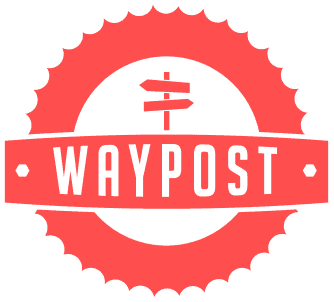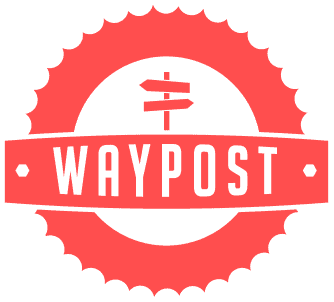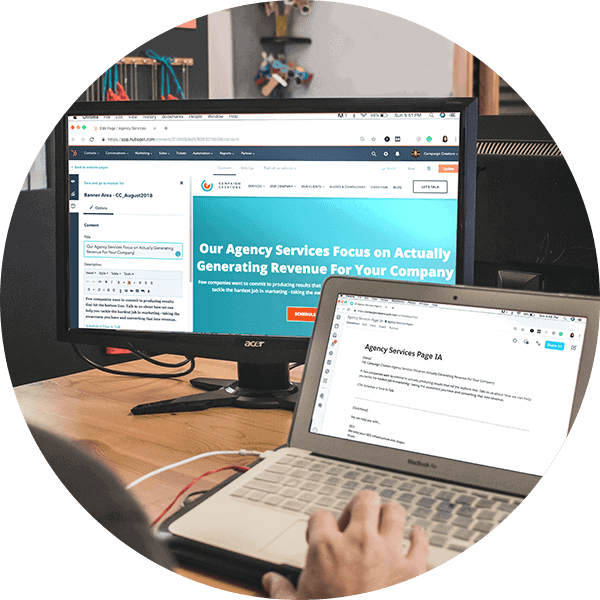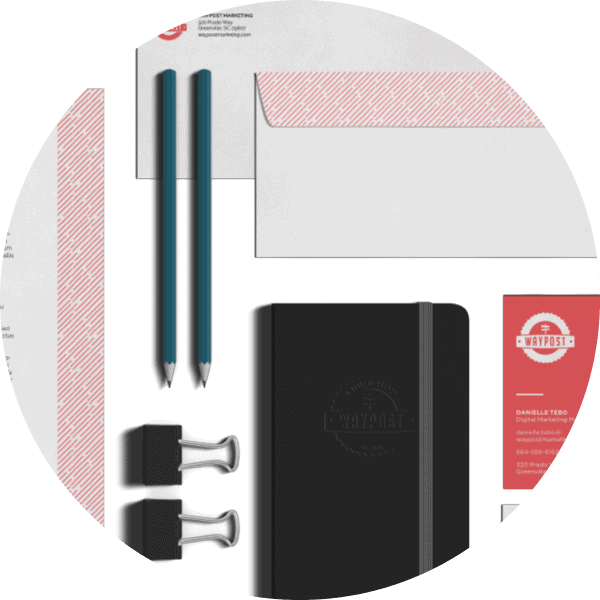
Digital Marketing for B2B: Stay Professional Without Losing Your Personality
May 3, 2018Content Marketing and Storytelling: True Love Forever
May 8, 2018
Are you a small business owner feeling swamped by all the well-meaning marketing advice online? We totally get it. It can feel like every digital marketing agency out there is ready to elbow each other aside to answer your most common marketing questions, but they’re less interested in whether or not those answers actually help you.
Small businesses sometimes succeed on a wing and a prayer, but it helps to know where those wings are taking you, too. Which is why we’ve put together a blog that’s not a sales pitch. It’s just an answer to one simple question:
Does a small business need a marketing strategy?
Answer: Every Business Needs a Marketing Strategy!
Building a small business, from those early struggles to make ends meet to becoming a growing success, almost requires an active online presence these days. Your customers are going to be searching online when looking for help with their problems, and it’s essential that you be right there waiting to show them why you’re the best bet.
Marketing and advertising just isn’t what it used to be, and that’s a good thing! We’ve left all those cold-call and door-knocking days behind, and replaced them with authentic personal connection, built on not just showing your prospective customers what you do and how you do it, but telling them why.
An Inbound Marketing strategy allows you to target exactly the ideal type of customers you’d most like to work with, design marketing content that is relevant, compelling, and most of all drives prospects to become leads, and keeps you top of mind when it matters most.
So Now You Know You Need a Marketing Strategy. Let’s Get Started:
What are your goals? We’re not talking month-to-month changes in profit margins, or specific amounts sold of a certain product or service. We’re thinking big-picture goals, like:
- Double your active client list by end-of-year 2020
- Triple sales within a decade
- Build a reputation as someone with knowledge and authority in your industry
- Find your way onto the first page of Google search results using SEO
- Be able to afford three new full-time hires within one year
- And so on
You can make this list three pages long or just six bullet points. The idea behind listing out these goals is that it gives you a better idea as to just what your want your digital marketing dollars to achieve for you. Building a digital and content marketing strategy is much easier when you can find points A and B, and you just need to design a way to get to point C.
Have your list together? Great! Let’s talk about the next step.
Small Businesses Have Tons of Marketing Options Online.
The upside to our modern totally-connected marketplace is that your potential clients or customers are easy to find right where they are. 80% of shoppers state that they research online before making a purchase, and for many of them, that research consists of a mix of looking up local companies and asking for recommendations or help via social media.
Inbound marketing is all about making the most of that research period! It’s pretty rare to see someone turn to the yellow pages, pick an HVAC company at random, and dial their number. Instead, your digital marketing strategy should help your prospect build a relationship with you, so you’re their first choice when they have a problem that you can solve.
The internet is a big place, so don’t get in over your head trying to do everything at once. It’s easy to feel overwhelmed, get discouraged, and stop posting consistently or communicating online with potential customers. A small business with a limited budget can still make a big impact by making the most of marketing options that cost little or nothing to use!
Social media: We don’t expect you to utilize every social media platform, but choosing just a few that are commonly used by your customer base (LinkedIn, Twitter, Facebook, Instagram…) will help you to locate prospects, connect with potential customers, and advertise effectively.
Blogging: Search engine algorithms these days really like to see fresh, relevant content appearing consistently, and blogging remains a great way to get that new content out there into the world. The key word here is consistent. You don’t need a new blog every day, but try posting twice a month at least. Your site will continue being refreshed with new content and your customers will love seeing informational content posted without a hard-sell sales pitch.
SEO, or Search Engine Optimization: SEO is all about making sure your company shows up first in search engine results for specific terms relevant to your business. Recent search engine algorithm changes have prioritized context over keywords, so you’ll want to keep that interesting content coming to stay top of the list.
Video marketing: Businesses that use video as part of their marketing strategy grow 49% faster than those who don’t. Provide DIYs, interesting information, candid behind-the-scenes looks at how your work gets done, and other video content to engage prospects and delight current customers. Plus, you don’t need a pile of fancy equipment and weeks of filming to make a great video… our Director of Product Sam Gerdt and Video Intern David Cross made a video in just two hours!
Email: While lots of big marketing agencies once tried to declare “email marketing is dead”, it remains the digital marketing tool with the highest return-on-investment for many small businesses. Monthly newsletters that customers opt in to receive, special promotions, sales, or discounts targeted to specific customer groups, “drip campaigns” that send out prewritten emails to prospects who opt-in or take a specific action (like downloading an ebook)… all of these can be incredibly effective tactics for bringing in new Sales Qualified Leads!
Traditional advertising can be incredibly expensive, especially when your initial marketing budget is very limited. That’s why free or low-cost digital marketing tools like social media, blogging, emails, SEO, and video marketing are such a great idea for small businesses that are just getting started!
So… How Can You Decide Which
Build a few Buyer Personas. A buyer persona is, simply put, a semi-fictional representation of your ideal customer or client. Having fully-developed Buyer Personas on-hand can help you cut through the noise of THE NEXT BIG THING online in order to target only those tools that will actually help you connect with your customers.
For an HVAC company, their first Buyer Persona might be Peggy:
- Peggy is a 45-year-old mom of three school-aged children
- She works outside the home full-time
- All three kids are in different extracurricular activities
- Peggy volunteers twice a week with a local nonprofit
- Peggy. Is. Busy.
When Peggy’s heat suddenly stops working during a cold snap in January, she can’t wait around all day. She needs the repair done now, and by someone who will do it right the first time. She’s willing to pay a little more for the convenience of the HVAC company working around her schedule.
Peggy’s pretty specific and was built especially for home service companies the basic premise works for basically everyone. The idea is to give yourself an easy-to-reference look at your average customer, their wants and needs, where your marketing efforts can most effectively connect with them.
With Buyer Personas in hand, you can effectively plan a marketing strategy that keeps you top of mind at their Zero Moment of Truth.
Built Your Buyer Personas and You’re Wondering What’s Next?
Next… you wait for the next post in this series. Rome wasn’t built in a day, and neither was this post about Inbound Marketing strategies for small businesses.
Stay tuned for Part 2: Storytelling and Small Business Marketing Strategies: True Love Forever.









